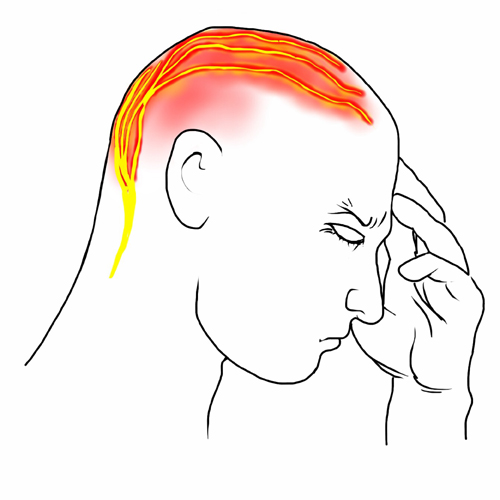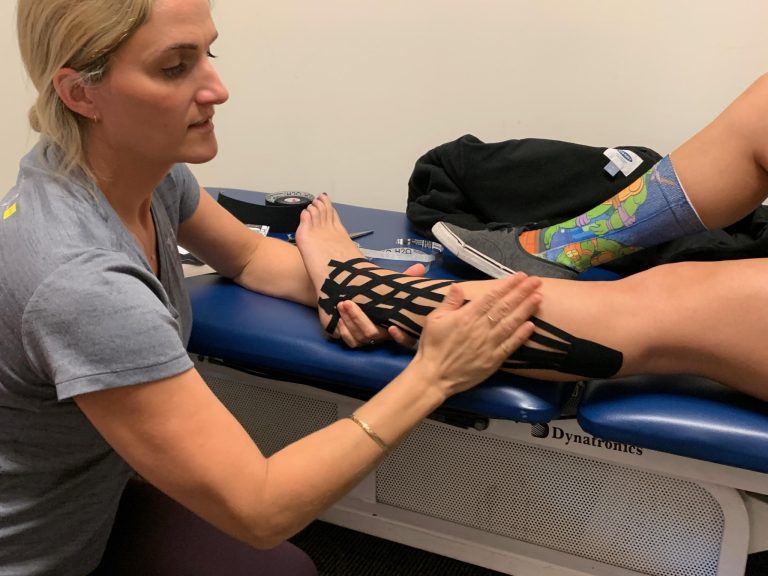Resistance training, often referred to as strength training or weight training, is an important component of a well-rounded fitness program. For beginners, resistance training offers many health and fitness benefits.
This article provides an overview of resistance training, including the benefits, guidelines for getting started, sample exercises with instructions, and tips for staying safe and avoiding injury.
Benefits of Resistance Training
Numerous scientific studies validate the wide-ranging health benefits of resistance training. Research shows that incorporating two or three resistance training sessions per week as part of a comprehensive fitness program can reduce the risk of several chronic diseases. One analysis found that strength training helps lower heart disease risk by improving lipid profiles and lowering blood pressure.
Another study found that just one intense resistance training workout can increase resting metabolic rate for up to 38 hours afterwards, facilitating weight loss and body fat reduction. The data clearly supports resistance training as a valuable disease prevention tool.
Specific program variables like volume, intensity, and frequency should be tailored to meet individual needs and goals. For healthy adults under 50, the American College of Sports Medicine (ACSM) generally recommends completing 2-4 total body workouts per week. These sessions should involve 1-3 sets of 8–12 repetitions per exercise targeting major muscle groups at a moderate intensity of around 60–70% of an individual’s 1-rep maximum (1RM). This recommendation produces optimal strength gains while incurring relatively low injury risk.
For special populations like the elderly, lighter intensities closer to 40–50% of 1RM are suggested.

While resistance training does pose some inherent injury risk if performed improperly, research shows it can actually help prevent orthopedic problems like low back pain when integrated as part of proper rehabilitation protocols. One literature review found that closely monitored strength training not only reduces pain but also corrects muscle imbalances that contribute to spinal dysfunction. The review suggested both individual and clinical benefits of resistance training-based low back rehabilitation programs.
Overall, scientific data provides further support for the wider adoption of resistance training across all adult age groups.
Adding resistance training to your routine can provide the following key benefits:
Builds Muscle and Strength
Resistance training causes the muscles and associated connective tissue to adapt and become stronger. Over time, resistance training can increase muscle mass as well as strength. Most routines target the major muscle groups like legs, hips, back, chest, abdomen, shoulders and arms.
Supports Weight Loss
While resistance training builds muscle mass, it can also aid in fat loss and weight management. Building muscle raises your basal metabolic rate, meaning you burn more calories even while at rest. In addition, strength training workouts burn calories which supports a calorie deficit for weight loss.
Reduces Disease Risk
Research shows that resistance training may help reduce the risk of several chronic diseases and conditions. These include heart disease, stroke, high blood pressure, diabetes, obesity, back pain, osteoarthritis, depression, and more.
Improves Bone Health
The resistance applied to the muscles during strength training causes the bones to adapt and become stronger as well, thereby helping to prevent conditions like osteoporosis. Strength training has also been found to reduce the risk of bone fractures.
Enhances Functional Fitness and Performance
Resistance training leads to increases in muscular strength, power, endurance and motor performance. Things like walking speed, stair climbing and getting up out of a chair are all improved. This type of functional fitness helps you better perform regular daily activities.
Now that you know the major benefits of resistance training, let’s go over some suggested guidelines for beginners.
Getting Started with Resistance Training
If you’re a beginner, start by following these training guidelines:
Frequency
Aim to do resistance training at least 2-3 days per week. Rest days in between sessions are important to help your muscles recover and adapt. More frequent sessions are possible for more advanced lifters.
Sets and Repetitions
Start with 2-3 sets of 10-15 reps per exercise. Focus on proper form rather than the amount of weight lifted. The last few reps should feel moderately challenging but not impossible.
Rest Between Sets
Take about 1-2 minutes of rest between each set. For beginners, the focus should be on learning proper technique rather than lifting the heaviest weights possible. Adequate rest allows your muscles to briefly recover.
Weight and Progression
As a beginner, start with lighter weights allowing you to focus on form and technique. Increase the weights gradually over time as your body adapts to the training stimulus. Increase weight when you can comfortably do the top end of the rep range.
Training to Muscle Failure
Training to complete muscular failure, where you physically cannot lift the weight for another rep, is not recommended for beginners. Save training for failure for more advanced programming down the road.
Balance and Variety
For balanced muscular development and maximum fitness gains, target all the major muscle groups with a variety of free weights, resistance machines, bodyweight and functional movements.
Now let’s go over some resistance training exercises suitable for beginners.
10 Resistance Training Exercises for Beginners
Here are 10 great starter exercises to include in your resistance training routine:
1. Squats
- Primary muscles worked: quadriceps, glutes, hamstrings
- Stand with your feet shoulder-width apart. Send your hips back and bend your knees to lower down until your thighs are parallel or almost parallel to the floor. Press through the heels to return to the starting position. Keep your chest up, your back straight, and your knees aligned over your toes.
2. Lunges
- Primary muscles worked: quadriceps, glutes, hamstrings
- Stand upright then step forward with one leg, lowering until both knees are bent at 90 degree angles. Push back to start then repeat on the other leg. Keep torso upright and abs braced throughout the movement.
3. Push Ups
- Primary muscles worked: chest, shoulders, triceps, core
- On floor, place hands slightly wider than shoulder-width apart. Keeping body straight from toes to shoulders, lower chest down until elbows are bent to 90 degrees. Press back up until arms are straight. Modify by doing push ups against a wall or on knees to decrease resistance.
4. Rows
- Primary muscles worked: upper and mid back, rear shoulders
- Holding dumbbells or resistance band with straight arms, brace core and hinge slightly at the hips. Initiate movement by pulling shoulder blades back, driving elbows toward body. Slowly straighten arms to return to start position while keeping good posture. Can substitute machine rows or bodyweight inverted rows.
5. Overhead Shoulder Press
- Primary muscles worked: shoulders, triceps, upper back and core
- Sit or stand holding dumbbells at shoulder height with palms facing forward. Press dumbbells directly overhead until arms are straight, then slowly lower back down. Keep neutral spine by bracing core throughout movement. Can substitute machine shoulder press.
6. Deadlift
- Primary muscles worked: posterior chain including lower back, glutes and hamstrings
- With feet hip to shoulder-width apart, push hips back while hinging forward at the hips to grab loaded barbell. Lift weight by driving through heels, straightening hips and torso until standing upright. Slowly lower bar back to floor with control concentrating on hip hinge form. Can substitute Romanian deadlifts or good mornings.
7. Biceps Curls
- Primary muscles worked: biceps
- Holding dumbbells with palms facing forward, keep upper arms stationary at your sides. Initiate movement by bending elbows and curling dumbbells up toward shoulders. Slowly lower weights back down maintaining control. Avoid swinging motions. Can substitute machine preacher curls or cable curls.
8. Triceps Extensions
- Primary muscles worked: triceps
- Holding single dumbbell overhead with both hands, keep upper arm stationary next to head and elbows pointing up. Lower forearm down toward back until full stretch is felt. Use triceps to raise weight back overhead. Control motion throughout and avoid flaring elbows out. Can substitute pushdowns and kickbacks.
9. Calf Raises
- Primary muscles worked: gastrocnemius and soleus calf muscles
- Stand with ball of foot on the edge of a step or platform. Raise up onto toes, fully contracting calf muscles at the top. Hold briefly then slowly lower heels down below the step to feel a full stretch in calf muscles. Repeat for specified repetitions.
10. Planks
- Primary muscles worked: core including rectus abdominis, transverse abdominis, obliques and lower back extensors
- In push up position, rest weight on forearms and toes keeping body flat. Brace core and hold static contracted position for 30-60 seconds. Rest and repeat for 2-3 sets. Can modify by lowering knees to floor to decrease resistance.
Be sure to include exercises that target the major muscle groups for balanced development. Mix up your routine regularly to continually challenge your muscles in new ways leading to further adaptations.
Now let’s go over some tips for staying safe with resistance training as a beginner.
Safety and Injury Prevention Tips
While extremely beneficial, it’s important to keep safety top of mind, especially for beginners. Here are some useful tips:
Learn Proper Form – Improper form is one of the quickest ways to get injured. Before attempting new exercises, learn proper technique by reading tutorials or working with a certified trainer. Always prioritize quality movement over adding more weight.
Start Light – Lifting too heavy too soon is a common mistake for beginners. Focus first on technique using lighter loads. Give your muscles, tendons, ligaments and joints time to adapt to resistance training to minimize injury risk.
Use Spotters – Have someone watch you and provide manual assistance if needed when lifting challenging weights. This helps avoid potential injury if technique falters on a set.
Pay Attention to Alignment – Joint injuries often result from poor alignment during an exercise. To stay in proper position, engage stabilizer muscles, maintain neutral spine and avoid “locking out” joints under heavy loads.
Warm Up First – Always do at least 5-10 minutes of light cardio and perform joint mobility drills before strength training. This increases blood flow, body temperature and range of motion to make working out safer and more effective.
Listen to Pain Signals – Normal muscle soreness following a workout is to be expected. Sharp, sudden pain or lingering joint discomfort usually indicates injury. Cease activity immediately and consult a sports medicine professional if needed.
Prioritize Recovery – Muscle tissue breakdown and subsequent overuse injuries will occur without adequate rest between workouts. Take 1-2 days completely off from training each week and avoid excessive soreness.
Practice Patience – Many beginners try to progress too aggressively in terms of weight and volume. Resistance training elicits a gradual training effect. Expect visible progress within 6-8 weeks of consistent training.
If you keep safety in mind by following proper program guidelines and technique, resistance training can be extremely rewarding with limited downside. Use the beginner tips provided to get started, and be sure to consult a certified professional with any questions. Stay consistent, be patient through early plateaus, and respect your body’s need for recovery. Before you know it, you’ll start seeing fantastic strength and aesthetic results from your training efforts!
References
- Fletcher GF, Balady G, Froelicher VF, et al: Exercise standards: a statement for healthcare professionals from the American Heart Association. Circulation 1995;91(2):580-615
- Pollock ML, Graves JE, Swart DL, et al: Exercise training and prescription for the elderly. South Med J 1994;87(5):S88-S95
- American College of Sports Medicine. (2015). Quanity and Quality of Exercise for Developing and Maintaining Cardiorespirotory, Musculoskeletal, and Neuromotor Fitness in Apparently Healthy Adults: Guidance for Prescribing Exercise. Retrieved March 1, 2015, from American College of Sports Medicine: https://pubmed.ncbi.nlm.nih.gov/21694556/






